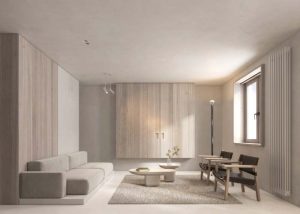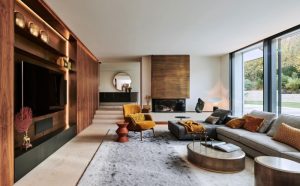
Modern Open-Concept Living Room sets the stage for this enthralling narrative, offering readers a glimpse into a story that is rich in detail with casual formal language style and brimming with originality from the outset.
Open-concept living rooms have become synonymous with contemporary design, providing a seamless flow between spaces and maximizing natural light. This guide delves into the key aspects of modern open-concept living rooms, offering valuable insights for designing a space that is both trendy and practical.
Modern Open-Concept Living Room
Open-concept living rooms are designed to eliminate barriers between the kitchen, dining area, and living room, creating a seamless flow and a sense of spaciousness.
There are several benefits to having an open-concept living room:
Benefits of Open-Concept Living Room
- Enhanced social interaction: With no walls to separate the spaces, family members and guests can interact freely, making it ideal for entertaining.
- Increased natural light: The open layout allows natural light to flow throughout the space, creating a bright and airy atmosphere.
- Improved sightlines: Without walls blocking the view, you can easily keep an eye on children or pets while going about your daily tasks.
- Flexible use of space: The lack of walls provides flexibility in furniture arrangement and allows for a multi-functional living area.
- Modern and spacious feel: Open-concept living rooms give a contemporary and spacious feel, making the area visually appealing.
Tips for Designing a Modern Open-Concept Living Room
- Choose a cohesive color palette to create a unified look throughout the space.
- Use area rugs to define separate zones within the open layout.
- Consider furniture placement to create distinct areas for lounging, dining, and cooking.
- Opt for sleek and minimalistic furniture pieces to maintain a modern aesthetic.
- Incorporate statement lighting fixtures to add visual interest and define different areas within the room.
Minimalist Design

In the context of living room aesthetics, minimalist design focuses on simplicity, functionality, and clean lines. It involves reducing elements to their essential forms and eliminating clutter to create a sense of calm and spaciousness.
Key Elements of Minimalist Design in a Modern Living Room
Minimalist design in a modern living room typically includes the following key elements:
- Neutral color palette: Use of neutral colors such as white, beige, gray, or black to create a sense of serenity and sophistication.
- Clean lines and simple shapes: Furniture and decor with sleek, straight lines and simple geometric shapes for a streamlined look.
- Functional furniture: Multi-functional furniture pieces that serve a purpose while maintaining a minimalist aesthetic.
- Limited decor: Focus on a few carefully selected decor items to avoid visual clutter and maintain a minimalist vibe.
- Open space: Emphasis on open-concept layout with ample space between furniture to promote a sense of airiness and light.
Examples of Minimalist Furniture and Decor for Open-Concept Spaces
When furnishing an open-concept living room with a minimalist design, consider the following furniture and decor options:
- Sleek sectional sofa: Opt for a simple, low-profile sectional sofa in a neutral color to anchor the seating area without overwhelming the space.
- Minimalist coffee table: Choose a minimalist coffee table with clean lines and a simple design to complement the sofa and add functionality.
- Statement lighting: Incorporate modern, minimalist lighting fixtures such as pendant lights or floor lamps to enhance the overall aesthetic.
- Abstract art: Select a few pieces of abstract art with a minimalist style to add visual interest to the walls without overpowering the room.
- Plant accents: Introduce a touch of nature with a few potted plants or succulents to bring life to the space and add a pop of greenery.
Modern Classics

When it comes to interior design, modern classics refer to timeless pieces that have a contemporary twist, blending traditional elements with modern aesthetics. These pieces add a touch of sophistication and elegance to any space, making them a popular choice for open-concept living rooms.
Popular Modern Classic Furniture Pieces
Incorporating modern classic furniture pieces into your open-concept living room can elevate the overall look and feel of the space. Some popular modern classic furniture pieces for living rooms include:
- Le Corbusier LC2 Sofa: This iconic sofa combines comfort with sleek lines and a minimalist design, making it a perfect addition to a modern open-concept living room.
- Eames Lounge Chair and Ottoman: This classic piece exudes elegance and style, providing both comfort and sophistication to the space.
- Tulip Table: The Tulip Table, designed by Eero Saarinen, features a distinctive pedestal base and a sleek marble top, adding a touch of modern sophistication to the living room.
Blending Modern Classics with Contemporary Elements
Creating a harmonious balance between modern classics and contemporary elements is key to achieving a cohesive look in an open-concept living room. Here are some tips on how to blend modern classics with contemporary elements:
- Mix and Match: Pair modern classic furniture pieces with contemporary decor items such as abstract art or bold accent pieces to create a dynamic contrast.
- Neutral Palette: Opt for a neutral color palette for the walls and larger furniture pieces, allowing the modern classics to stand out while maintaining a timeless look.
- Statement Lighting: Incorporate contemporary lighting fixtures to add a modern touch to the space while complementing the classic furniture pieces.
Modern Living
Modern living spaces are characterized by clean lines, minimalistic design, and a focus on functionality. These spaces often feature open-concept layouts that create a seamless flow between different areas of the home.
Importance of Natural Light
Natural light plays a crucial role in modern living room design as it helps to create a bright and airy atmosphere. Large windows and glass doors are commonly used to maximize natural light and bring the outdoors in. This not only enhances the overall aesthetic of the space but also contributes to a sense of well-being and connectivity with the environment.
Incorporating Technology
When it comes to incorporating technology into a modern open-concept living room, there are several innovative ideas to consider. One popular option is to install hidden outlets and charging stations for seamless connectivity without compromising the design aesthetic. Smart lighting systems, automated window treatments, and integrated audiovisual solutions can also enhance the functionality and convenience of the space while maintaining a sleek and modern look.
In conclusion, Modern Open-Concept Living Room encapsulates the essence of modern living, where functionality meets style in a harmonious blend. With the right design elements and a focus on creating a cohesive space, your open-concept living room can truly become the heart of your home.
Frequently Asked Questions
What are the benefits of open-concept living rooms?
Open-concept living rooms create a sense of spaciousness, promote social interaction, and allow for better natural light flow.
How can I design a modern open-concept living room?
To design a modern open-concept living room, focus on cohesive color schemes, strategic furniture placement, and incorporating minimalist elements for a sleek look.
What is the significance of blending modern classics with contemporary elements?
Blending modern classics with contemporary elements adds a timeless appeal to your living room while infusing it with a touch of modern sophistication.





